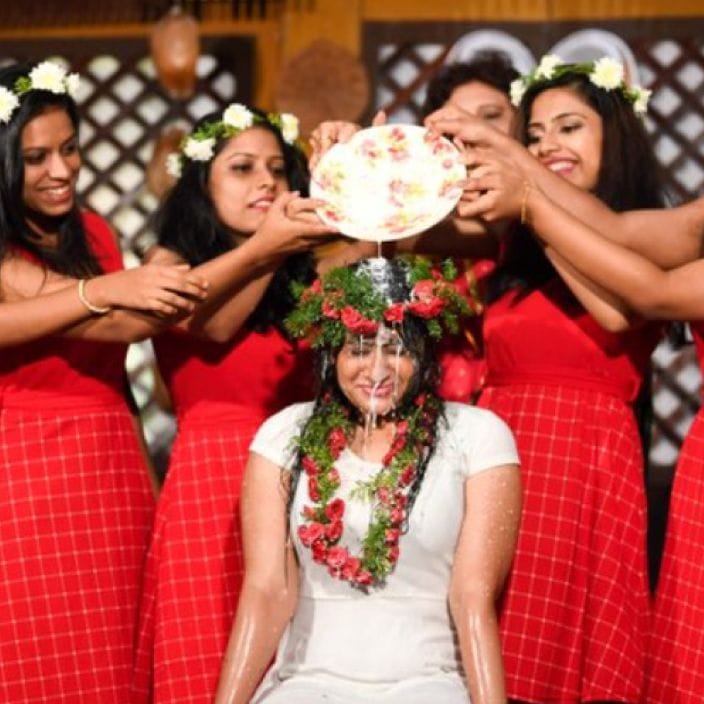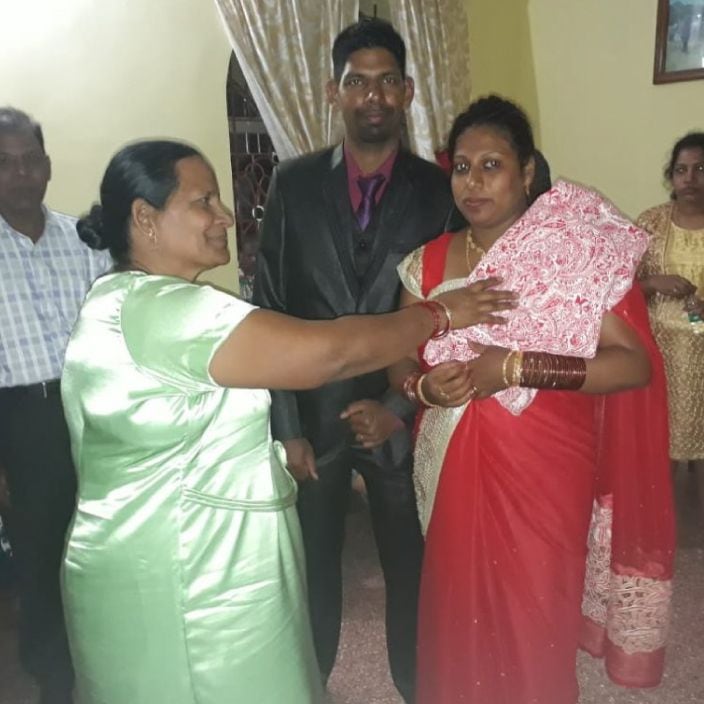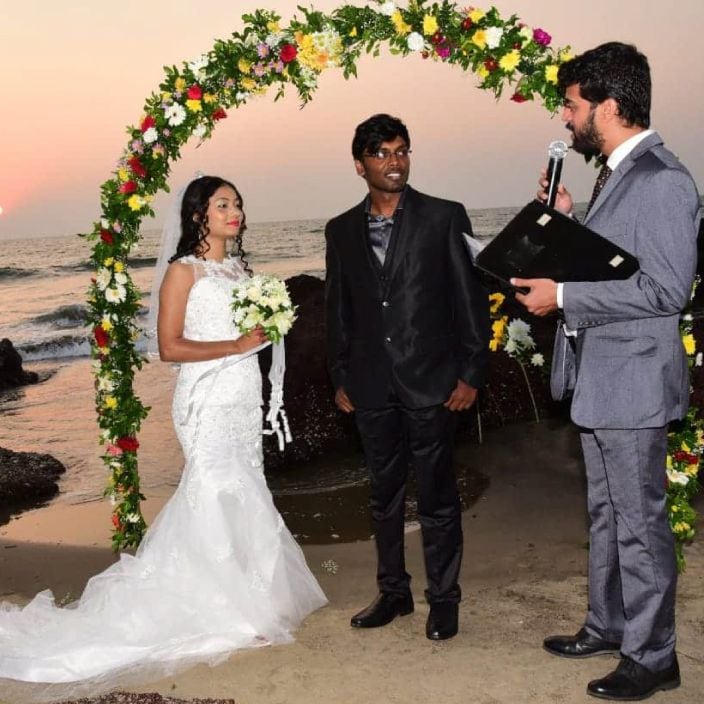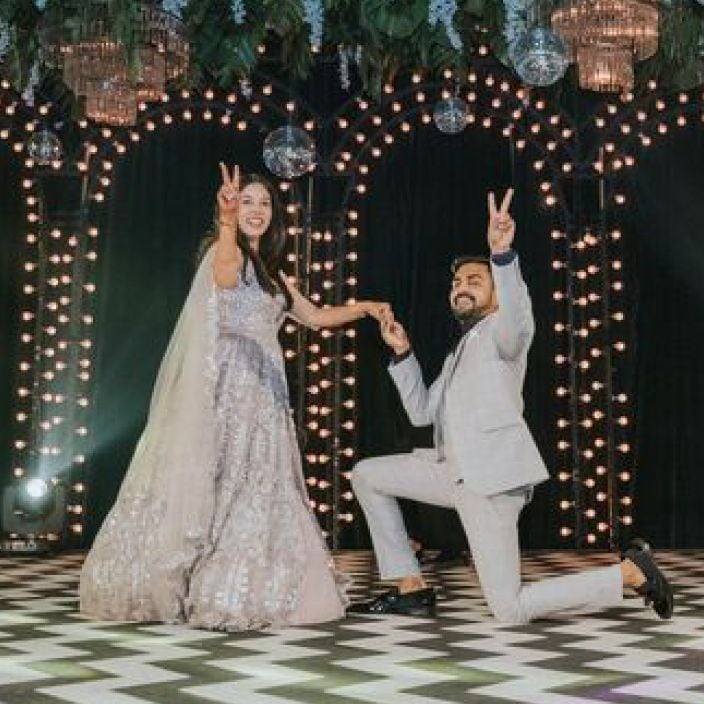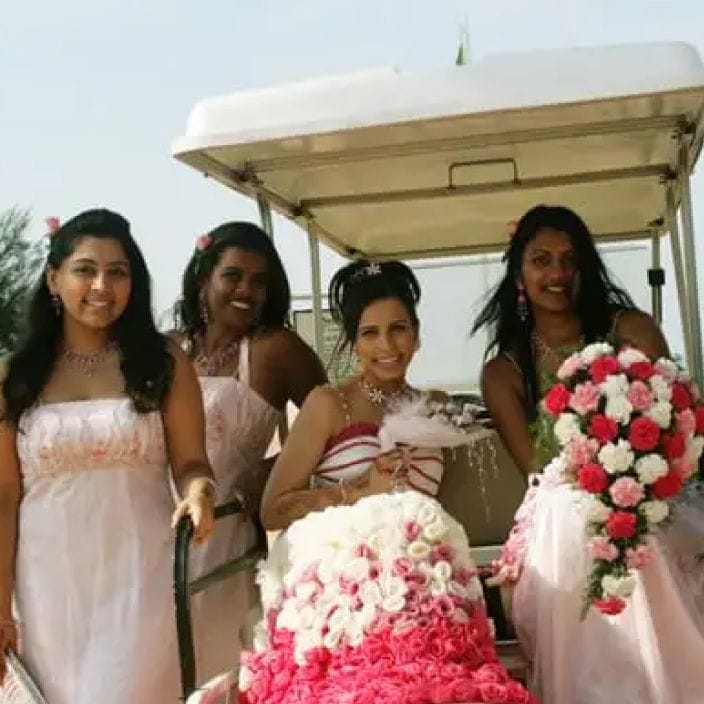For best prices and early deliveries, WhatsApp us at. 918488070070
Goa
Goa is known for its beaches, greenery and magnificent churches. Despite being the smallest state in India, it boasts a wealth of beauty, culture and traditions. Many Goans practice Christianity, and the history of Catholicism in Goa dates back to the century when missionaries first introduced the religion to the local community. Today, Catholicism plays a role in Goan society, shaping its customs, traditions and way of life, including their approach to weddings. The Goan Catholic community has a unique identity that blends elements of Portuguese culture. This fusion is evident in aspects of Goan Catholic life such as language, cuisine, and especially weddings! Goan Catholic weddings are occasions filled with festivities and a strong emphasis on faith. These celebrations typically span three days and include a series of Christian and Goan rituals.
Tracing the Traditions
A Goan wedding comprises multiple ceremonies that may differ slightly from one family to another. However, they generally adhere to an age sequence that has been passed down through generations. The festivities kick off with the Chuddo Ceremony. A wedding tradition is typically held at the bride's residence, where a local bangle vendor showcases an array of traditional glass bangles for the wedding entourage. The bride carefully selects red and green glass bangles believed to bring luck.
Next is the Bhikrea Jevon feast, named after 'Bhikari', meaning a beggar, and 'Jevon', referring to food. The term ‘Bhikrea’ symbolises the act of giving alms. During this custom, families host a feast for the underprivileged as an act of kindness and in honour of the wedding celebration. It also serves to pay homage to their ancestors and seek their blessings. The Bhuim Jevon ritual is another meaningful tradition observed in Goan weddings. This ritual is a community meal served on banana leaves, emphasising humility, togetherness, and gratitude.
The official engagement ceremony is known as Denem. Here, the bride and groom exchange rings as a symbol of their commitment. Typically attended by family and friends, this event marks the beginning of exchanging gifts between families, signifying the formalisation of the marriage. Following this is the Roce ceremony, where coconut milk and oil are used for bathing the bride and groom — an equivalent to Hindu weddings Haldi ceremony—with songs and dances adding moments to this festive occasion.
The primary wedding ceremony traditionally occurs in a church setting, representing the part of the nuptials where vows are exchanged between the couple in divine presence. A priest leads the ceremony, sharing passages from the Bible, singing hymns, and offering prayers. The couple exchanges rings and vows and seals their union with a kiss to become husband and wife!
Following the marriage ceremony, the bride receives a gift called Saddo from her family. Saddo typically consists of a dress, saree or embellished fabric piece adorned with embroidery. This gift holds significance for the bride on her wedding day. The newlyweds then proceed to reception, where they can rejoice with their loved ones. The celebration features a feast, music, and lots of dancing! The couple has their first dance, followed by a dance between the bride and her father, as well as heartfelt toasts from select members of the wedding party.
After the merriment concludes, a Portonem ceremony known as 'Return' takes place post-wedding. On this occasion, following their nuptials, the bride and groom visit the bride's family home and spend the night there. The bride adorns herself in her Saddo attire while her family presents a gold chain as a token of affection to the groom.
Wedding Attire
In Goan Catholic weddings, it is customary for the bride to don different kinds of ensembles for rituals throughout the ceremonies. During the Chuddo ceremony, she usually opts for colourful attire, like a saree, anarkali set, skirt set, or salwar kameez. The main highlight of this event revolves around the glass bangles, which are available in red and green. Each colour is significant; red symbolises passion, while green signifies prosperity. Moving on to the Roce ceremony, the Goan bride adorns herself in a saree or white gown to exude simplicity and elegance, reflecting purity.
For the wedding mass, the bride dazzles in a white wedding gown featuring silhouettes such as a ball gown, A-line skirt, or mermaid cut. The gown is often adorned with lace, pearls, and intricate embroidery. Brides also have the option to accessorise with a veil, tiara, or flowers in their hair. Following the nuptials is the presentation of Saddo — either a saree or dress — showcasing the blend of Portuguese influences in Goan weddings. While white symbolises purity in customs, red represents fortune and fertility in Hindu traditions.
For the wedding reception, she can change into another gown. Since receptions are not religious affairs, brides have more freedom to explore different ensembles openly.
A glittering corset dress for a touch of glamour or a luxurious silky satin ensemble for sophistication – the choices are limitless. New-age brides also opt for an embellished saree or lehenga outfit for a more Indian look.
During the ceremonies, the groom typically opts for a kurta set or a simple suit. However, when it comes to the wedding and reception, it is common to see him donning a suit or tuxedo in shades like black, navy, or grey. Some contemporary grooms may even opt for beige or white outfits.
While the fundamental aspects of Goan Catholic wedding attire remain consistent, each family has its preferences. The final ensembles mirror the community's traditions and the couples' individual styles. Guests attending Goan Catholic weddings often choose sarees, salwar kameez sets, or exquisite gowns. Men may opt for suits or traditional garments.
Traditional Cuisine
Goan cuisine is known for its spiciness and diversity, with influences from Maharashtrian, Konkani, and Portuguese traditions. It is situated along a coastline with seafood such as fish, prawns, crabs, lobsters, and coconut plantations, which add to its unique flavours.
Goan cuisine is known for its seafood and infused curries, which are complemented by an array of local bread and rice.
At the heart of Goa's offerings are iconic dishes like fish curry, prawn balchão, vindaloo, cafreal, and sorpotel. These flavourful dishes are commonly enjoyed with rice or bread varieties such as poi or sannas. For vegetarians, there are options like bhaji, which is made with local vegetables and a blend of aromatic spices. These traditional dishes are often featured at weddings. Goan pulao and fried rice are also popular staples at these celebrations.
Wedding feasts typically kick off with an assortment of appetisers, including Prawn rissóis, croquettes, and beef cutlets. The main course showcases signature delicacies like coconut-based dishes, cafreal, fish curry, chicken xacuti, pork vindaloo, and beef roast alongside rice-baked bread and a selection of salads.
Indulgent desserts, like bebinca—a layered coconut cake—dodol—a decadent coconut and jaggery pudding— doce, boll, patoleo, creme caramel and pudding never fail to please the crowd. A wedding cake adorned with sugar flowers, edible pearls, marzipan decorations, and figurines representing the newlyweds can be spotted at these celebrations.
The beverages served at Goan Catholic weddings exhibit diversity that matches the richness of the cuisine. There is a range of beverages, from classic options like feni, a local spirit made from cashew or coconut, to modern cocktails and non-alcoholic mocktails that cater to various preferences. Additionally, fresh coconut water, kokum kadi, commonly found in Goan homes, remains a refreshing choice for many.
Cultural Decor
At Goan Catholic weddings, it's not just about the rituals and delicious food. The decorations play a huge part in creating an atmosphere. The wedding decorations showcase the richness of Goa by blending modern styles to set a lively and joyful mood. The intricate details in the decor emphasise the significance of the celebration and aim to make it a memorable experience for the couple and their guests.
Generally, the decor at Goan Catholic weddings strikes a balance between sophistication and cultural heritage. The venues are often adorned with flowers, lights and beautiful fabrics to create a welcoming ambience. The use of colours adds to the vibe, with shades like white, gold, red and green holding special meanings while enhancing the overall charm.
Some popular decor elements at these weddings include arrangements that grace the church, the reception venue, and even the homes of the bride and groom. Flowers such, as roses, marigolds and lilies are commonly used either in garlands or contemporary displays. These beautiful floral arrangements represent purity, love and fresh beginnings, bringing a vibrant touch to the festivities.
Another popular feature is the display of fairy lights and candles. These are often hung around the venue, casting light throughout the space. The play of light and shadow creates an ambience during nighttime events. Moreover, luxurious drapes and canopies crafted from fabrics like silk and satin are used to embellish entrances, stages, and seating areas, adding an air of sophistication and grace.
The traditional arts of Goa also play a role in wedding decorations. Handmade items such as clay lamps, bamboo decor pieces, and intricate wooden carvings are frequently integrated into the decor scheme to showcase craftsmen's talents. These traditional crafts not only enhance the venue's appeal but also pay homage to the region's cultural legacy.
A unique traditional craft featured in Goan wedding decor is the "toran," or floral garland hung at the venue's entrance. Crafted from flowers and leaves and sometimes adorned with beads or shells, this toran symbolises welcome and good fortune. It sets a tone for guests as they enter to partake in this celebration.

